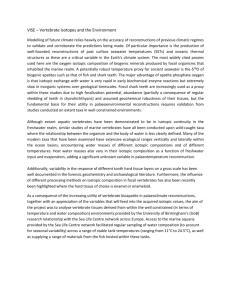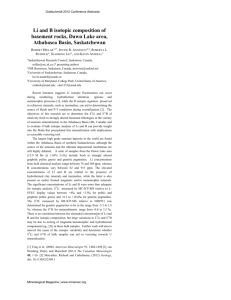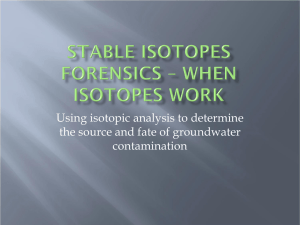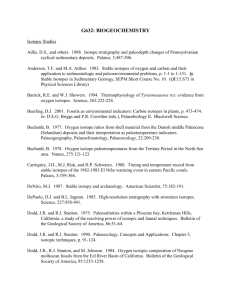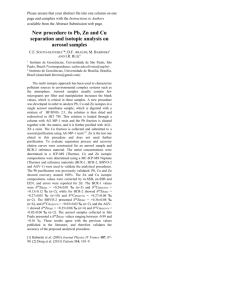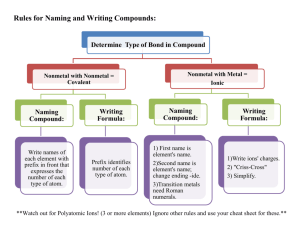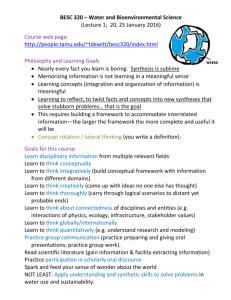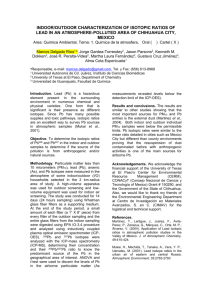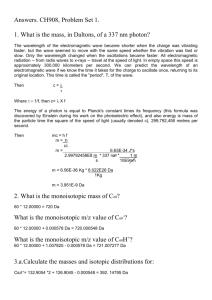Learning Modules - Department of Computer Science, NMSU
advertisement
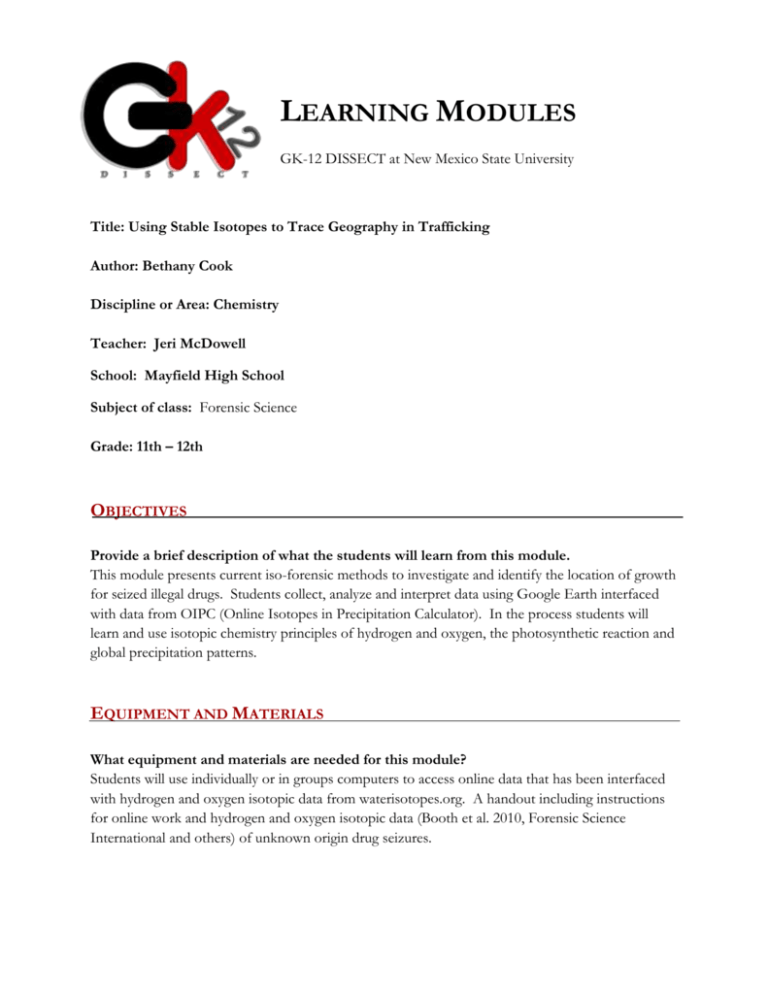
LEARNING MODULES GK-12 DISSECT at New Mexico State University Title: Using Stable Isotopes to Trace Geography in Trafficking Author: Bethany Cook Discipline or Area: Chemistry Teacher: Jeri McDowell School: Mayfield High School Subject of class: Forensic Science Grade: 11th – 12th OBJECTIVES Provide a brief description of what the students will learn from this module. This module presents current iso-forensic methods to investigate and identify the location of growth for seized illegal drugs. Students collect, analyze and interpret data using Google Earth interfaced with data from OIPC (Online Isotopes in Precipitation Calculator). In the process students will learn and use isotopic chemistry principles of hydrogen and oxygen, the photosynthetic reaction and global precipitation patterns. EQUIPMENT AND MATERIALS What equipment and materials are needed for this module? Students will use individually or in groups computers to access online data that has been interfaced with hydrogen and oxygen isotopic data from waterisotopes.org. A handout including instructions for online work and hydrogen and oxygen isotopic data (Booth et al. 2010, Forensic Science International and others) of unknown origin drug seizures. BACKGROUND AND REFERENCES What is the purpose of this module, and how does it relate to the content of the teacher’s current lesson plans? Where are you getting your information and theories? Have any other researchers been involved in development? The purpose of this module is to 1) present forensic science students’ with fundamental chemistry principles including subatomic particles, atomic mass, isotopes 2) review the role and source of hydrogen and oxygen in plant photosynthesis and 3) use remotely collected hydrogen and oxygen data from precipitation stations around the world to investigate a relevant forensic science issue. Hydrogen and oxygen isotopic precipitation data has a global pattern. As plant photosynthesis incorporates water from rainfall, an isotopic pattern is preserved in the products (sugars). Plant tissue can then be analyzed with Isotope Ratio Mass Spectrometry to reveal isotopic hydrogen and oxygen data. Background Information and current uses can be found at waterisotopes.org. PROCEDURE Provide detailed instructions on how this module is taught. Students participate in a review/discussion of atomic structure, atomic mass and isotopes. Sample calculations are worked in a group for hydrogen and oxygen isotopes. Students review mass spec methods and discuss Isotope Ration Mass Spec methods after viewing video of lab facilities and equipment used. Hydrogen and oxygen isotopic ratios from published data of actual drug seizures (marijuana – multiple samples from one growth location) are provided to the students. Students begin by mapping precipitation hydrogen and oxygen isotopic ratio data from GoogleEarth/OIPC onto a global map. They use the mapped data and visible pattern to narrow the growth location from continent to closest city. Class data from each student or group is then compiled and discussed. NOTES AND OBSERVATIONS What were challenges you encountered in the overall product of the module? On some of netbooks, the map overlays created a graphic display problem. The link between GoogleEarth and OIPC occasionally broke and had to be reestablished. What was successful? The students enjoyed using GoogleEarth. They were keen on “flying” to locations around the globe and collecting isotopic data. They were interested in the forensic science of drugs and how we can collect clues from seized drugs to aid in a criminal investigation. How was the students’ reception to the content of the module? Although the initial chemistry fundamentals were a lot for some students to handle (if they had no previous exposure it would be too much in one continuous module), they were interested in the application of isotopic chemistry to a drug investigation. Most students were able to correctly discuss iso-forensics and predict other possible uses of these analytical methods.
